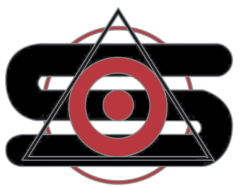Based on the post, Handgun Training to Become a Better Shooter
Smaller caliber guns aren’t just for newer shooters. If you want to become an expert, practice with a light-kicking gun.
The classic example is a .410 shotgun. Folks assume that since the .410 is small, light, and shoots a low recoil round, then it must be great for new shooters. With some exceptions, I think the opposite is true. The .410 is really an expert’s gun. If you see someone slinging a Beretta 687 Silver Pigeon on the skeet range, chances are they know what they’re doing. It’s hard to bust a moving clay target with a small shot charge. But if you can, then repeating the action with a 12 gauge will seem as easy as hitting water with a boat.
There’s a similar scenario with .22LR handguns. While it’s not harder to hit a target with a .22, I think a .22 pistol is just as appropriate for an advanced shooter.
If you want to become an expert shooter, you need to master trigger press. The best way to build outstanding trigger press skills is through daily dry fire practice, like the drills we explain in the Trigger Pull Drill article. Most new shooters are going to get bored with dry fire. The best professional shooters in the world practice dry fire drills every day.
The .22 long rifle caliber pistol is not just for beginners.
A good .22 pistol is the purest form of achieving the joy of shooting, without any of the downsides. No loud explosions right in front of your face. No harsh recoil. No blistered hands from the grips or trigger guard grating against your skin with each shot. No four digit ammo bill. No neighbors complaining about noise from three miles away. Just the fun of finding a target, pressing the trigger and hitting it.
The real benefit of shooting a .22 is not so much the lack of downsides of larger cartridges, but the ability to easily focus only on the quality of your trigger press. Without the anticipation of noise and recoil, you can focus 100% of your brain activity on the trigger finger movement, even after the shot is fired. It’s like dry fire with benefits!
When practicing with a .22 pistol, pick small targets. Aim small; miss small. Focus on nothing but the front sight and a deliberate and slow trigger press. Slow means s — l — o — w, glacially slow. Don’t try to yank the trigger when the front sight is just where you want it. Instead, try to keep the sight on the target while you’re being slow on the trigger. You are guaranteed to hit what you’re aiming at if you exclude everything else in your world except the front sight and a slow and deliberate trigger press.
While it will be satisfying to hit your tiny targets as you learn how to slowly press the trigger without moving the gun, there’s an even bigger benefit. You’re training your brain and your muscles on the proper trigger press. So when you switch to a larger centerfire pistol, your brain will be conditioned to repeat a smooth, not jerky, trigger press, even though there is recoil on the way.
If your goal is to have fun and build good shooting habits, you can use most any .22 pistol. It doesn’t have to exactly match your gun. With space age looks, it will get attention at the range. More importantly for this purpose, it’s ridiculously comfortable and easy to shoot accurately.
If you really want to practice with the feel of your regular gun, consider a .22 conversion kit.
You may find that, after shooting a larger pistol for a while, you start to miss. That’s probably because you’re letting the anticipation of recoil slip back into your brain. No worries. Just break out the .22 again. In fact, take it to the range every time you go and shoot it first to warm up. You’ll reinforce the good habits, remember some of the pure joy of shooting a .22, and save a little money in the process.
